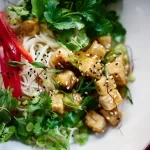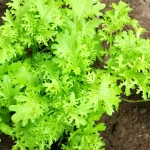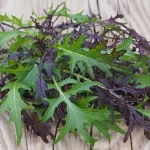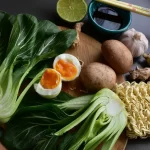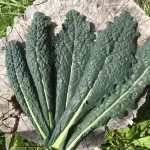
autumn and winter, with their cooler temperatures, offer a bounty of robust, flavourful salad greens that truly thrive in the cold.
Begone Summer, Autumn and Winter Are the Real Salad Days:
A Guide to the Tastes and Textures of Cold-Season Salad Greens
Once summer is over, many people think it’s time to pack away the salad spinner, clear out the last of the salad dressing from the fridge, and throw it in the compost bin. But this is a mistake—associating salads only with the warmth of summer limits your options! Yes, summer is great for delicate lettuces and juicy tomatoes, but autumn and winter, with their cooler temperatures, offer an even mightier bounty of robust, flavourful salad greens that truly thrive in the cold.
Unlike their heat-sensitive summer cousins, hardier autumn and winter salad greens reach their peak during the shorter days of the cooler months, providing a wealth of texture, flavour, and versatility that summer simply can’t match.
From September to March, your salad bowl can be filled with spicy Asian greens, spinach, mizuna, rocket, and kale, all offering distinct tastes and textures perfect for raw dishes, as well as a variety of cooking methods including steaming, stir-frying, sautéing, and, of course, as raw salad ingredients.
We want to convince you that autumn and winter should be celebrated as the real salad days. So, we’re giving you a breakdown of the greens we grow here at Bare Acre during the cooler months, showing how they can make the autumn and winter season shine.
Asian Greens: Crisp, Peppery, and So Versatile
Asian greens such as tatsoi, pak choy, and mustards like Green Frill and Red Dragon bring a refreshing bite to autumn and winter dishes. These greens are sturdy, making them perfect for raw and cooked dishes alike.
- Tatsoi: With its dark green, spoon-shaped leaves, tatsoi offers a slightly mustardy, mild pepperiness that adds complexity to salads. Its texture is crisp and firm, making it perfect for raw preparations where you want a bit of crunch.
Cooking method: Tatsoi holds up well to quick stir-frying, especially with garlic and soy sauce, where it adds a soft, yet slightly crisp texture to the dish.
- Pak Choy: Pak choy’s contrasting textures—crunchy white stalks and tender green leaves—make it a versatile option for salads and cooked dishes. Its mildly peppery flavour becomes more pronounced when cooked.
Cooking method: Use baby pak choy raw for a crunchy, refreshing salad, or lightly steam or stir-fry mature pak choy to bring out its sweetness while maintaining its firm texture.
- Mustard Greens: Known for their bold, spicy flavour, mustard greens are perfect for those who like a bit of heat in their salads. Raw, they add a peppery zing, while cooking mellows their spice.
Cooking method: Lightly steaming or sautéing mustard greens softens their bite, making them ideal for stir-fries or soups where you want to introduce subtle spice without overpowering the dish.
Spinach: Tender and Mellow
Spinach is a cold-weather powerhouse that becomes even sweeter in the autumn and winter. Its soft texture and mild flavour make it versatile, both raw and cooked.
- Raw: Spinach leaves are delicate and slightly sweet, ideal for salads where you want a neutral base that won’t overshadow other ingredients. Their smooth texture pairs well with sharp cheeses, nuts, or fruits like pears and apples.
- Cooking method: When cooked, spinach wilts quickly, becoming soft and silky. Sautéing with garlic and olive oil enhances its delicate flavour, while using it in soups and stews adds a lush, velvety texture. Spinach also works brilliantly in stir-fries, adding depth without being overpowering.
Mizuna: Feathery, Tangy, and Light
Mizuna is a real winter superstar. This Japanese green, with its thin, feathery leaves and subtle, peppery flavour, is a favourite for raw preparations.
- Raw: Mizuna’s light, crisp leaves bring a mild spiciness to salads, similar to rocket but with a more nuanced tang. It adds lovely texture to mixed green salads, where its feathery appearance and soft bite contrast with harder ingredients.
Cooking method: Mizuna is best lightly wilted. A quick toss in a hot pan or added to soup just as it finishes cooking allows it to soften while retaining its signature peppery flavour. Mizuna also pairs wonderfully with sesame oil and soy sauce in an Asian-style stir-fry.
Rocket (Arugula): Bold, Peppery, and Vibrant
Rocket is the cool-season green that delivers a peppery punch, perfect for those who love strong flavours. Its tender leaves thrive in the cooler months, offering spice without the bitterness you sometimes get in the heat of summer.
- Raw: Rocket’s intense, spicy flavour makes it an excellent addition to winter salads or sandwiches. Its thin, delicate leaves provide a soft texture with a sharp bite, balancing sweet ingredients like roasted butternut squash or figs.
Cooking method: While often eaten raw, rocket can be gently wilted to soften its sharpness. Scatter it on pizzas, stir it into pasta, or add to risottos after cooking to infuse the dish with mild peppery flavour while preserving the leaves’ tenderness.
Kale: Hearty, Sweet, and Versatile
Kale is the king of cold-weather greens, and frost only improves its flavour, making it sweeter and more tender. Whether curly kale or cavolo nero, kale brings something different to the table.
- Raw: Traditionally, raw kale can be tough, but at Bare Acre, we grow it under cover and harvest it young, which keeps it tender. You can also massage it with olive oil and salt to soften the leaves and enhance their earthy sweetness, making them perfect for raw salads.
Cooking method: Kale’s hearty texture makes it ideal for longer cooking methods like grilling, where it becomes soft but maintains its structure. It’s also wonderful sautéed with garlic and chilli flakes for a spicy side dish. Kale chips, baked until crispy, offer a fun, crunchy snack. - Steamed: Kale is excellent when gently steamed, especially with lemon juice or balsamic vinegar to enhance its sweetness. Cavolo nero is particularly suited to steaming, where its flat leaves maintain a satisfying chew.
Stir-fried: Kale’s sturdy leaves hold up well in stir-fries, adding both texture and flavour. Combine it with ginger, sesame oil, and soy sauce for an Asian-inspired dish that showcases kale’s natural sweetness with a bit of umami.
Summary of Textures and Flavours of Winter Salad Crops
- Asian Greens: Crisp and peppery when raw, with a mild heat that intensifies when cooked.
- Spinach: Soft and tender with a mild, slightly sweet flavour that becomes silky when wilted.
- Mizuna: Light, feathery texture with a mild, peppery tang. Quickly wilts when cooked but retains its spice.
- Rocket: Thin and tender with a bold, peppery bite. Pepperiness softens slightly when wilted.
- Kale: Hearty and slightly sweet, with a chewy texture that softens into a melt-in-the-mouth experience when cooked.
Embrace the Bounty of Winter Salads
With the right balance of raw and cooked preparations, you can enjoy a diversity of flavours and textures that will transform your salads, stir-fries, and soups into seasonal delights. Embrace the real salad days—autumn and winter bring richness to your table that’s hard to beat.

